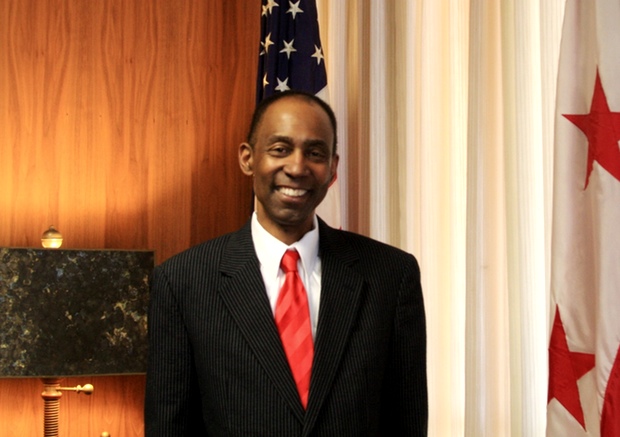DC Superior Court chief judge Lee F. Satterfield began the morning of November 28, 2011, with “a pretty good headache.”
“I thought it had to do with all the things I had to do that day, and I hadn’t eaten breakfast,” he recalls. On the agenda for Satterfield: delivering a eulogy at funeral for a former chief judge in Silver Spring, followed by an afternoon meeting back at his DC office.
But the headache only worsened as the day continued. It was his colleague who finally noticed something odd about Satterfield during their meeting. “Are you okay?” she asked him.
“I just assumed I was speaking normally,” Satterfield says, when in fact, the chief judge had begun to speak “unusually.” He felt an odd sensation on the left side of his body. “It wasn’t numbness—I don’t know how to explain it. But it just didn’t feel right.”
Satterfield had none of the risk factors of a stroke—high blood pressure, high cholesterol, being overweight—but he was exhibiting the telltale signs of one: the sudden headache, trouble speaking, and weakness on one side of his body. Medics rushed him to George Washington University Hospital, where he remained for ten days after suffering a stroke from atrial fibrillation, a common type of arrhythmia that increases the risk of stroke.
A stroke, or brain attack, occurs every 40 seconds in the US. In a moment it cuts off the flow of blood and oxygen to the brain; it’s the fourth leading cause of death in the US, killing more than 133,000 people each year.
Satterfield is one of the lucky 7 million stroke survivors in the US over the age of 20. He was also fortunate to not suffer any long-term disability post-stroke—he was back to work in two weeks. Almost two years later, he hasn’t exhibited any more signs of stroke, although he does make more time for rest, despite his demanding job.
“I don’t want to say [my recovery] wasn’t difficult, because a lot of stroke survivors go through a lot, and I don’t want to minimize it,” Satterfield says. “But I was so fortunate to come out of it so well.”
But, the judge adds, he’s even more grateful that his colleague dialed 911, even against his wishes. “She basically ignored me, which is a good thing. It was the best thing that could have happened to me.”
In honor of National Stroke Awareness Month, GW Hospital will offer free stroke screenings tomorrow from 8 AM to 1 PM at 900 23rd Street, Northwest, outside the Foggy Bottom Metro station.

















